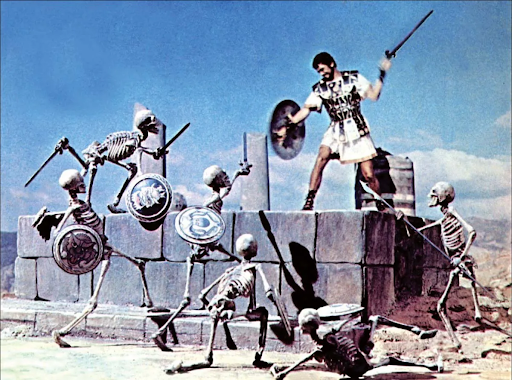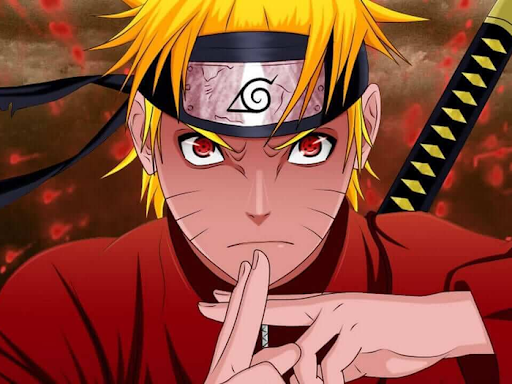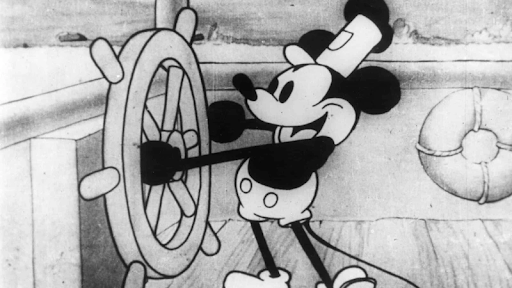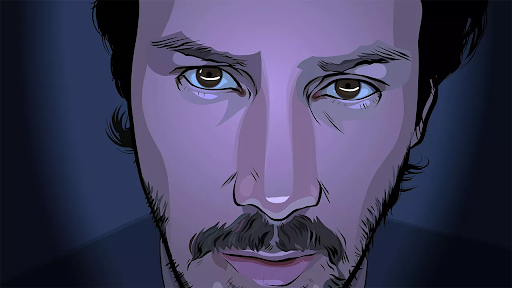10 Key Terms in Animation vol. 3

First we gave you 10 key animation terms. But it wasn't enough. So we gave you 10 more key animation terms. But still it wasn't enough and the insatiable baying mob demanded more. So here you are. Here's 10 more key animation terms to help you unravel and understand the complex and beautiful world of animation.
1. Asset Creation
In very simple terms, assets are 'things of value' and they can have different meanings in different industries - whether it's manufacturing, accounting or spycraft.
In filmmaking it refers to the underlying property that a film is based on such as a screenplay or novel.
In animation (or video games) it's different again and refers to the parts, elements or accessories that are combined together to create a finished animation. It could be a character, a car, graphic text, a texture, a piece of music etc.
If you can see it on the screen, it's part of asset creation.
Since modern animation is such a complex, multi-stage process combining many different parts, the creation of assets needs to be meticulously planned in the workflow. An asset must be ready to be used when it is required or else the entire project could be held up.
For major animation projects created at scale, such as a Disney feature, asset creation is often outsourced to different companies to speed up the process.
2. Colour grading
Colour Grading is a crucial part of film-making that involves altering an image’s colour balance. Also called ‘colour correction’, it allows the filmmaker to change the hue, value and saturation of an entire film. It also allows for creating colour continuity throughout the film if scenes have been shot at different times and places and so have mismatching tone when edited together. Colour grading is usually carried out by a colourist who is responsible for creating the overall colour scheme of a film to achieve a specific mood or visual look.
Another important part of colour grading is creating versions of the film for different viewing conditions. i.e. a film being shown in a cinema needs to be graded in a different way to a version being shown on a home tv.
Back in the pre-digital days and pre-video days, it was called colour timing and was a photochemical process that could manipulate the colours on the film print. Nowadays everything is done digitally with programmes like Adobe After Effects. Thank God.

3. Stop motion
Stop motion is a technique that is a unique and special branch of animation. It is done by physically manipulating an object in slight increments and shooting a single frame of each new position. When the frames are played back in sequence, it gives the impression of movement. The most widely used kinds of manipulated objects for characters are puppets with movable joints and plasticine figures (claymation).
It is one of the earliest forms of animation but the time-intensive technique has meant that its popularity has waned over the years, especially since the advent of digital animation which can be done faster and more cheaply.
Famous stop motion animators include Ray Harryhausen, Nick Park and Aardman Animations, Tim Burton and more recently Wes Anderson.
There is also a strong tradition of stop motion in the Czech Republic with animators like Jan Svankmajer and Jiri Trnka creating memorable films. It may be a dying art but there is a special magical charm about stop motion that draws filmmakers to it and ensures that the tradition of the craft lives on.
4. Sweat Box
Traditionally, a sweat box is somewhere that is hot and claustrophobic and will make you sweat. Usually it's either found in a prison as a place you are sent for punishment, or it's a room designed for sweating things such as animal hides or foodstuffs.
In animation however, it has a different meaning and has been creatively appropriated to refer to dailies or raw, unedited footage that has just been shot and is shown to key members of the production team for appraisal.
The term was first coined by the Disney Studios in the 1930s, as the latest footage was always played in a hot sweaty room and Walt liked to crowd around a motorola with his team to watch it. The word evolved further so that it became a verb and 'to sweatbox' means to watch animated dailies.
This delightfully visual phrase has stuck and is still used today, although it is used less.
5. Anime
In Japan, anime refers to all kinds of animation but for the rest of the world, the word anime has specifically come to be associated with animation created in Japan. With the characters' distinctive large eyes, it's one of the most instantly recognisable visual styles of animation with a massive output that is shown throughout the world on tv and in cinemas. It's also had a huge influence on animation styles in other countries.
Not to be confused with Manga (which is Japanese for comic book and refers only to comic books), Anime has various sub-genres. Some such as Pokemon and Sailor Moon are aimed purely at kids and teens. Others like Death Note and Fullmetal Alchemist have darker and more violent subject material. These are a reflection on Japan's different attitudes towards violence and sexuality.
Key anime feature films include Akira, Ghost in the Shell, Paprika and everything ever done by the amazing Studio Ghibli.

6. Mickey Mousing
In the general sense, mickey mousing refers to the synchronisation of music and the moving image on the screen. However, this is a curious term whose meaning has evolved over the years.
It originated from Walt Disney's 1928 film Steamboat Willie, the first film to synchronise the music and action. It was a revolutionary moment in film history and forever changed the way we engage with film.
The term caught on and evolved to include live action film as well, where the music is consciously laid down to synchronise with, mirror or play in parallel to the screen action. It became incredibly popular in the 1930s and 40s, when it was used to accentuate the action. But its overuse led to its downfall as it became a cliche and the term has derogatory connotations these days when used in 'serious cinema'. It is still happily used in cartoons today though. Check out some examples here.

7. Rotoscoping
Rotoscoping is an animation technique whereby live-action footage is traced over frame by frame. It's a pretty old school technique (invented by Max Fleishcer in 1915) and originally, the live-action images would be projected onto a glass panel and then the animator would trace over that image by hand. Today, computers can do the job instead of humans but it is still relatively expensive and time-consuming. But the effect is a unique and beautiful one, with a look that is both hyper-realistic and animated.
It was also used in the early days of CGI for special effects by creating a matte and then tracing over it. The lightsabers in Star Wars are a famous example of this. Hitchcock also used rotoscoping to animate the birds in The Birds.
New computer software ushered in a new generation of rotoscoped films such as Tron, Waking Life and Sin City.
A fine Czech example of a rotoscoped feature was Negativ Film's Alois Nebel

8. Motion Capture
Motion capture, also known as mo-cap for short, is the recording of a live actor's (or animal's) movement and then applying it to a 3D character. It is different from rotoscoping as here, animated images are imposed onto live action images. In mo-cap, receptive markers are attached to the the key points of an actor's body who then performs actions which are recorded by multiple motion capture cameras.
When the cameras see the same marker, it is able to identify and record the marker's position. This data is then recorded in RAW Motion Data. .C3D files are then created which can be applied to the 3D character. In this way, incredibly detailed models of physical movement can be captured, stored, and then be manipulated to create ultra-realistic motion.
Motion Capture has many uses and is also used extensively in feature films where it is often called performance capture. Andy Serkis’ famous performance as Gollum in The Lord of the Rings films really made the technique a household name.

9. Ray Tracing
Ray tracing is a kind of graphics technology that realistically calculates rays of light (both visible and invisible) to enable complex life-like lighting and shadow effects in real time. Nowadays it is extensively used in 3D animation and computer games and animated 3D graphics.
It is done using an algorithm that sends out rays from a source (or multiple sources) in the form of a 3D graphic. It can trace the rays’ paths and then create a realistic lighting model based on these trajectories.
Ray tracing is able to identify whether the rays come from original light sources or are from reflected objects. The algorithm then defines the necessary pixel colours based on the tracked rays, reflections, incident light and surface textures.
The technology is still relatively new and requires vast amounts of memory and an RTX graphic card. The level of realism it can create however, is mindblowing.
10. VR and AR
VR (virtual reality) is a computer generated environment experienced through a headset. The simulated 3D world gives the user the feeling they are fully immersed in this artificial world. AR (augmented reality) integrates digital information into a real life environment. The user therefore experiences an enhanced, real-life environment overlaid with digital information (images, sound text etc).
So the two are similar and use similar conceptual technology but are fundamentally different in the way the user experiences and interacts with the technology.
The first animated films were created in the first decade of the 20th century. In the 120 years since then, advances in technology have seen incredible changes in the way they are created and distributed. The cutting edge technology of VR and AR means they are regarded as a possible future of the way we experience digital animation. It is still in its infancy, but as VR and AR technology evolves, the animation tools will become more advanced to create these experiences and user interfaces will become more intuitive. Their use and application have unlimited potential. It's a new frontier and the possibilities are very exciting.
